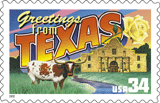 |
In 1977, Congress authorized the issuance of the first semipostal stamp for the specific purpose of raising funds from the American public to assist in finding a cure for breast cancer. The stamp was sold for 40 cents and is valid for the current cost of a one-ounce First-Class letter. Congress directed that the difference between the price of the stamp and the First-Class Mail rate, less program costs, be directed to two designated research agencies, the National Institutes of Health (NIH) and the Department of Defense (DOD) Medical Research Program. In accordance with the law, the General Accounting Office (GAO) has reviewed this program.
From program inception through the end of 2001, approximately 326 million BCR stamps have been sold. Three years of sales raised a net voluntary contribution of $22.3 million, of which $5.5 million was raised in 2001.
The law provides for semiannual payments to be made on a schedule agreed to by the research agencies and the Postal Service. Proceeds from BCR stamp sales from July 28, 1998 through early September 2001 have been paid to the research agencies in a total of seven payments.
The costs associated with the BCR stamp include: design, printing, packaging, advertising, promotion, training, legal fees, market research, programming for retail automation and receipt printing costs. The Postal Service deducts selected incremental costs from BCR stamp revenues and then pays the proceeds to the research agencies. From the begining of this program through the end of 2001, a total of slightly more than $650,000 has been withheld to cover these incremental costs.
|
 |

|



















 continue...
continue...
